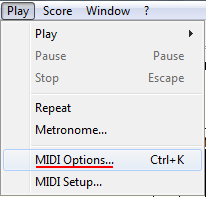

Ratio of “decoration” to “melody” notes.Fretting hand excursions up and down the neck.Overall, the factors that contribute to the overall degree of difficulty of an arrangement, and its appropriateness at any given time in the learning progression, include: So the Brainjo level system is designed to ensure that you have access to arrangements that are both appropriate to your current level, and that build skills in a logical, cumulative fashion. ( RELATED : Click here to read more about the “Timeline of Mastery. Remember, habits are far easier to create than undo, so it’s far better to build them right from the start. Early on in one’s banjo playing days, it can be difficult to distinguish between the melody, drone, and decoration notes, much less emphasize particular notes in his or her playing.įor these reasons, it’s critical that the beginning player learn arrangements appropriate for his or her current position along the Timeline of Mastery. It’s quite common for a beginning player to lament the fact that their playing doesn’t match the sound of more experienced banjoists, despite the fact that they’re playing all the notes.Īnd the reason it doesn’t sound the same is usually this: whereas an experienced player is capable of emphasizing the melody notes in their playing, this is beyond the technical capabilities of someone at an earlier phase in the learning timeline. This becomes all the more confusing if one tries to learn these types of arrangements from the start. For the early player, this can be a confusing situation. These are all those extra notes that give the banjo its signature machine-gun, rolling sound (and is why people think of banjo playing as “fast”).Īs this breakdown illustrates, in a typical fingerstyle arrangement, many, if not most, of the notes being played are not primary melody notes. “Decoration” notes – notes that aren’t part of the primary melody.Drone notes – a note that rings out in the background through much of the tune.When it comes to fingerstyle banjo specifically, we can consider an arrangement of any particular tune as having 3 primary components. (RELATED: Click here to read more about the secret to always staying motivated. I want the music you make to be rewarding regardless of where you’re at. I also work hard to ensure that every arrangement, regardless of its complexity, will sound great. In the end, it’s your ears that should be the judge. So resist the urge to make your playing more complex just for the sake of it, or to try to tackle more challenging arrangements because you feel you must as a sign of progress. Some of the greatest players of all time used a very sparse style, which allowed freed them up to infuse their music with heart, soul, and great rhythm. Remember this: a good melody played simply with good timing and technique will always sound far better than the most technically sophisticated arrangement played sloppily. Having a lot of options or knowing a lot of techniques can be both a blessing and a curse, as it can be tempting to try to make things sound better just by making it fancier or more technically complex. )īut before I give you the description for each level, I’d like to insert a word of caution:ĭon’t fall into the trap of thinking that an arrangement that’s more complicated, or a higher level, is necessarily “better”. Click here to read more about the method. ( RELATED : The Brainjo Method is the first system of musical instruction that incorporates the science of learning and neuroplasticity, and specifically targets adult learners. You’ll see this denoted at the top right hand side of the tab with “Brainjo Level x” on it. To help you in always choosing music that’s right for you now, I’ve created a level system that accompanies all of the arrangements that are released by Brainjo. You may start out to learn a tune and ultimately find that it’s too far outside your comfort zone, or that it utilizes techniques or notation you’re not familiar with or haven’t seen before.

But both would still like to make really good music! And there’s no reason they shouldn’t.īut finding music that’s right for you, that you can make sound good with the skills you already possess, isn’t always easy. Someone who’s been playing for 3 months won’t have the same body of technical skills to draw from as someone who’s been playing 3 years. Learning music is a cumulative process that occurs over an extended period of time. One of the challenges that comes with learning a musical instrument or style, particularly one that doesn’t already have a highly formalized built in pedagogical structure (like classical violin, for example), is in finding tunes and arrangements to play that are appropriate for you current level of technical ability.


 0 kommentar(er)
0 kommentar(er)
